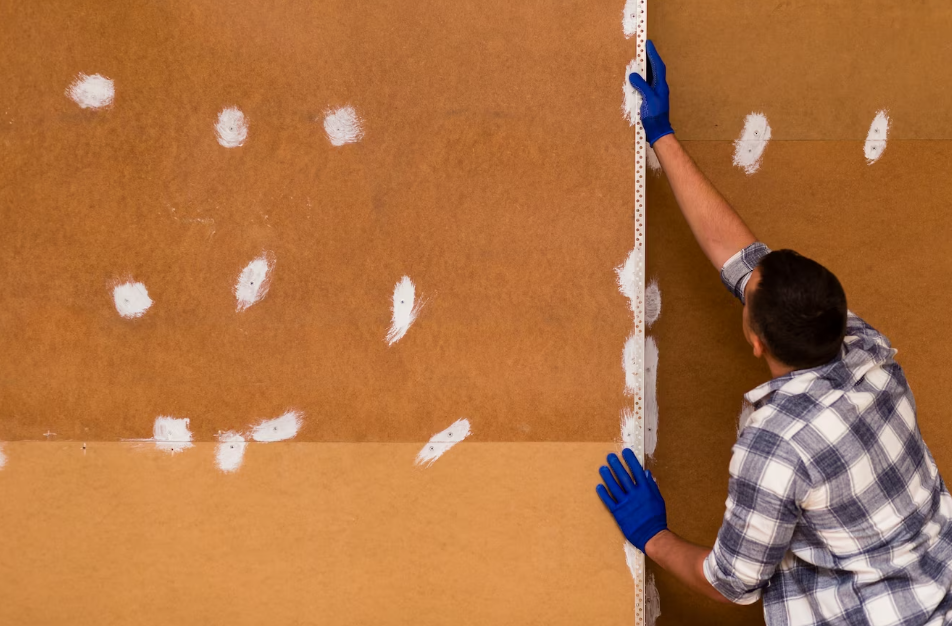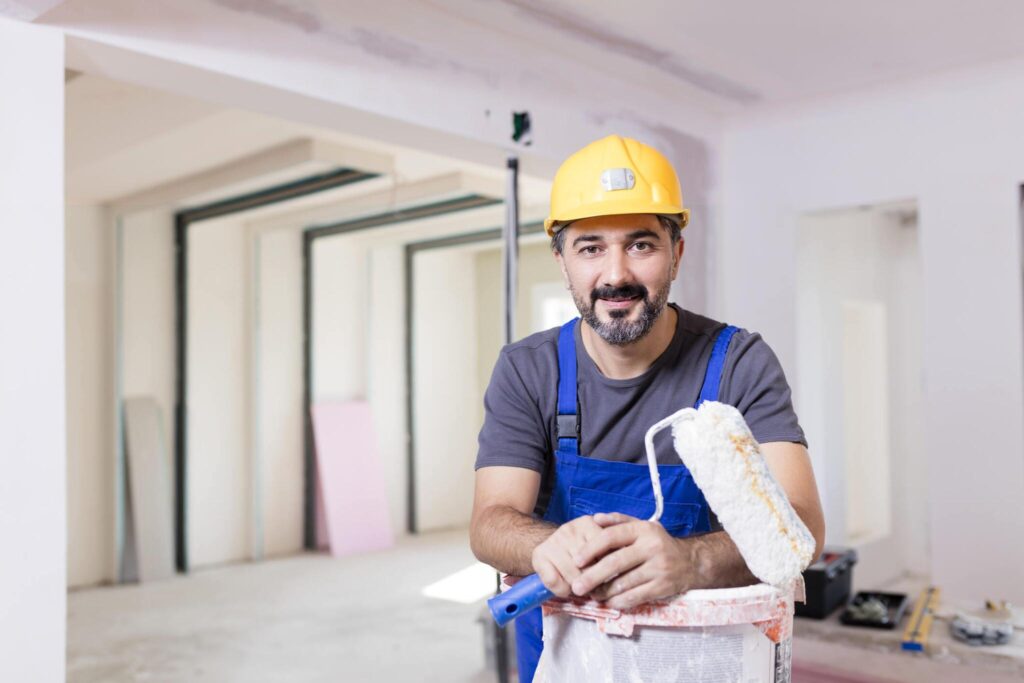When it comes to enhancing the curb appeal and
protecting the exterior of your home, a fresh coat of paint can work wonders.
However, painting the exterior of your house is not as simple as picking a
color and grabbing a brush. There are numerous common mistakes that homeowners
often make when painting the exterior of their homes. To help you achieve a
beautiful and long-lasting paint job, here are ten common exterior painting
mistakes every homeowner should avoid.
Table of Contents
1. Skipping Surface Preparation
2. Ignoring Weather Conditions
3. Choosing the Wrong Paint
4. Poor Brush and Roller Technique
5. Neglecting the Importance of Primer
6. Inadequate Coverage
7. Overlooking Safety Measures
8. Ignoring Detail Work
9. Dripping Paint
10. Failing to Clean Up and Maintain
FAQs
Key Takeaways
➢ Proper surface preparation is essential for paint adhesion and a lasting finish.
➢ Consider weather conditions when choosing painting days for optimal results.
➢ Select the appropriate paint type for your surface to ensure durability.
➢ Master brush and roller techniques for a polished, professional finish.
➢ Don’t skip primer; it enhances adhesion and overall paint quality.
➢ Prioritize safety with proper gear and precautions to avoid accidents.
➢ Attention to detail elevates the aesthetics of your paint job.
➢ Avoid rushing; take your time and follow the steps for a flawless result.
1. Skipping Surface Preparation
Without preparation, even the highest quality paint can fail prematurely. The most common issues arising from inadequate surface preparation include peeling, blistering, and the inability of the new paint to adhere correctly to the surface. These problems not only detract from the aesthetic appeal but also compromise the protective function of the paint, exposing your home to elements like moisture and sun damage.
To avoid these consequences, here are essential steps to follow:

- Thorough Cleaning: Begin with a thorough cleaning of the exterior surface. Use a pressure washer or a strong hose spray to remove all dirt, dust, and mildew. This ensures a clean canvas for your new paint.
- Scraping Old Paint: Scraping off any loose or flaking old paint after cleaning. New paint will not adhere well to a flaky, uneven surface, so this step is crucial for a smooth application.
- Sanding: Sand the surface to create a smooth base for the paint. Sanding helps in removing any lingering flakes and creates a slightly roughened surface for better paint adhesion.
- Repairing: Use a suitable filler for any cracks or holes, ensuring the surface is smooth and even before painting.
- Mold and Mildew Treatment: If there’s any mildew or mold, treat the area with a mold-killing solution to prevent future growth under the new paint.
- Applying Primer: A quality primer provides a consistent base and enhances the paint’s durability. This helps achieve an even color and increases the lifespan of your paint job.
2. Ignoring Weather Conditions
Extreme temperatures and humidity levels can affect how exterior paint adheres to surfaces and dries. This includes prolonged drying time, increased risk of debris sticking to the paint, and cracks or an uneven finish. Here are some key considerations to keep in mind:
- Check the Forecast: Check the days with consistent, mild weather conditions ideal for exterior painting. Consequently, never paint on a rainy day or when rain is forecasted shortly after painting. Moisture can severely affect the drying process of exterior paint and can wash away fresh paint. Be mindful of windy days as well because wind can carry dust and debris onto your wet paint and speed up the drying process too much, affecting the quality of your exterior painting.
- Ideal Painting Conditions: For exterior painting, aim for days with low humidity and temperatures ranging between 50°F and 85°F. These conditions allow the paint to dry evenly and adhere properly.
- Beware of Dew: Be cautious of morning dew when planning your exterior painting schedule. Start painting mid-morning to let any dew evaporate, and stop in the late afternoon to avoid evening moisture.
- Shade Matters: When painting in warmer weather, start on the shady side of the house. As the sun moves, so should you. This prevents the exterior paint from drying too quickly.
3. Choosing the Wrong Paint
The wrong paint can lead to fading, peeling, or a lackluster appearance that doesn’t favor your house. Here’s how you can dodge this common mistake:
- Know Your Surface: Different surfaces require different types of paint. You might want acrylic latex for wood, while stucco or brick fare better with elastomeric paint. It’s about what sticks best and lasts longer.
- Quality Matters: It can be tempting to save a few bucks on cheaper paint, but higher quality paint lasts longer, provides better coverage, and often comes with a warranty. Think of it as an investment in your home’s future.
- Test Before You Invest: Colors can look different under varying lighting conditions. Buy a small amount and test it on a part of your house. Observe how it looks at different times of the day before making your final decision.
- Finish is Key: The sheen of the paint affects its appearance and durability. For instance, glossy finishes are typically more durable and easier to clean, while matte finishes can help hide surface imperfections.
- Eco-Friendly Options: If you’re environmentally conscious, look for paints with low or no VOCs (Volatile Organic Compounds). These are better for the environment and your health.
4. Poor Brush and Roller Technique
A common pitfall for many DIY enthusiasts in exterior painting is improper brush and roller techniques, leading to less-than-desirable results. Poor application can cause various issues, from uneven coverage and visible brush strokes to a lackluster finish. These mistakes not only affect the aesthetic appeal of your home but can also impact the paint job’s longevity.
To ensure a smooth and professional finish in your exterior painting project, here are some key tips to follow:
- Use the Right Amount of Paint: Avoid overloading your brush or roller with paint. It should be enough to cover the surface adequately without causing drips or runs.
- Even Strokes: Apply the paint in smooth, long strokes. For brushes, maintain a consistent direction. With rollers, use a ‘W’ or ‘N’ pattern and fill in the gaps, blending into the wet paint.
- Maintain a Wet Edge: Always paint into a wet edge to avoid lap marks. This is particularly important in exterior painting, where drying can be uneven due to environmental factors.
- Correct Pressure: Apply consistent, moderate pressure. Too much pressure can leave marks and cause uneven application, while too little won’t give good coverage.
- Quality Tools: Invest in high-quality brushes and rollers. They hold paint better and give a smoother finish, which is crucial for achieving the best results in exterior painting.

5. Neglecting Primer
Skipping the primer is like building a house without a proper foundation. Primer ensures that your topcoat of paint adheres properly and is durable enough to withstand the elements. Without it, you may find that your paint job shows signs of wear much sooner than expected. Peeling, cracking, and a lack of vibrancy in the color are common issues when the primer is neglected in exterior painting.
To avoid these pitfalls and ensure a long-lasting, high-quality exterior paint job, here are some essential tips:
- Always Use Primer: This is especially important if you paint over a darker color, raw wood, or a porous surface. Primer helps to create a uniform surface for the paint to adhere to.
- Choose the Right Type of Primer: Different surfaces require different types of primer. For example, wood might need an oil-based primer, while masonry works best with a latex-based one.
- Consider Stain-Blocking Primers: If you have issues with stains or discoloration on your exterior walls, using a stain-blocking primer can help ensure these don’t bleed through the new paint.
- Apply Primer Evenly: Just like with paint, apply primer in even, smooth strokes. This ensures that the entire surface is adequately prepared for the topcoat.
- Allow Proper Drying Time: Don’t rush to paint over the primer. Ensure it’s completely dry, which can vary depending on weather conditions and the primer used.
6. Inadequate Coverage
Inadequate coverage with paint can lead to patchy areas where the old color or material shows through, diminishing the overall look and protection your paint offers. This mistake not only affects the appearance of your home but also compromises the paint’s protective qualities, leaving it vulnerable to the elements.
Here’s how to ensure complete and even coverage in your exterior painting project:
- Use Enough Paint: Don’t skimp on the amount of paint. It’s better to have a little left over than run out before achieving full coverage.
- Apply Multiple Coats: Depending on the color you’re covering and the color you’re applying, you might need more than one coat. Two coats are often necessary for complete coverage and a uniform finish.
- Be Methodical: Work in sections and use consistent strokes. This helps to ensure that you don’t miss any spots and that each section receives a uniform layer of paint.
- Allow Proper Drying Time Between Coats: Rushing to apply a second coat can result in a messy finish. Make sure the first coat is completely dry before applying the next.
7. Overlooking Safety Measures
When undertaking an exterior painting project, it’s easy to get caught up in the colors and techniques and forget about safety measures. However, overlooking safety can lead to accidents, some of which could be serious. Whether you’re up on a ladder or dealing with potentially harmful chemicals, exterior painting requires a mindful approach to safety.
Here are essential safety tips to keep in mind for your exterior painting project:
- Use Sturdy Ladders: Ensure your ladder is stable and strong. Place it on a level surface and follow the ‘three-point rule’—always keep three points of contact on the ladder.
- Wear Protective Gear: Safety goggles, gloves, and masks are crucial. They protect you from paint splatters, fumes, and dust, especially if sanding old paint.
- Mind the Heights: When working at heights, never overreach. Move the ladder frequently to stay within a safe working zone.
- Ventilation is Key: If you paint areas like porches or enclosed spaces, ensure good ventilation to avoid inhaling fumes.
- Check for Lead Paint: If your home was built before 1978, there’s a possibility it might have lead-based paint. In such cases, take extra precautions or consider hiring a trusted house painting company in Brookfield, CT, like Custom Colonial Painting.
- Stay Hydrated and Take Breaks: Exterior painting can be physically demanding, especially in hot weather. Stay hydrated and take regular breaks to avoid exhaustion.
- Keep Your Workspace Clean: A cluttered workspace can lead to trips and falls. Keep your area tidy and free of unnecessary objects.
8. Ignoring Detail Work
Overlooking the finer points like trim, edges, and corners can detract from your paint job’s overall quality and finish. It’s like framing a beautiful picture in a shabby frame — lacking attention to the edges can spoil the overall effect. Ignoring detail work can lead to a messy, unprofessional look, where the carelessness becomes more apparent than the color itself.
To ensure that your exterior painting project shines in all its aspects, here are some tips for nailing the detail work:
- Tape Off Edges: Use painter’s tape to achieve clean, straight lines around door frames, windows, and trim. This step might seem time-consuming, but it pays off in the precision it brings to your finish.
- Use the Right Tools: For detailed areas, switch to smaller brushes. A 1-inch angled brush is perfect for trim work and getting into tight corners.
- Take Your Time: Detail work is not the place to rush. Be patient and focus on precision. This careful approach will reflect in the neatness of the final look.
- Regularly Clean Edges: As you paint, periodically check and clean up any smudges or spills along the edges. It’s easier to clean paint when it’s wet than after it has dried.
- Don’t Forget the Top and Bottom Edges: Pay attention to the top and bottom edges of siding, as these areas are often missed but are crucial for a fully polished look.
9. Dripping Paint
Dripping paint can result in an uneven finish, making your paint job appear unprofessional and unfinished. Additionally, it leads to the wastage of paint, increasing material costs, and necessitating longer cleanup efforts. Furthermore, drips weaken the paint’s protective properties, leaving your surfaces more vulnerable to the elements.
Preventing dripping paint requires careful technique and attention to detail. Here are some tips to help you avoid this common exterior painting mistake:
- Use the Right Amount of Paint: Avoid overloading your brush or roller with excess paint, as excessive paint on your tools is more likely to drip.
- Apply Paint with Precision: Use smooth and controlled strokes to avoid hurried or erratic movements that can lead to drips.
- Regularly Check for Drips: Inspect your work for any signs of drips and address them immediately while the paint is still wet.
- Protect Surfaces Below: When working on overhead areas, use drop cloths or protective coverings to catch any potential drips and prevent them from reaching the ground.
10. Failing to Clean Up and Maintain
Neglecting the cleanup and ongoing maintenance can undermine all your hard work. Failing to clean up and maintain your exterior paint job can result in a shabby appearance, reduced durability, and even costly repairs down the line.
To ensure that your exterior paint job maintains its beauty and protection, follow these post-paint care and maintenance guidelines:
- Clean Regularly: Dirt, dust, and pollutants can accumulate on your painted surfaces over time. Regularly clean the exterior with a gentle detergent and a soft brush or sponge to remove these contaminants. Rinse thoroughly with water.
- Inspect for Damage: Periodically inspect your painted surfaces for any signs of damage, such as peeling, cracking, or blistering. Address these issues promptly by scraping, sanding, priming, and repainting the affected areas.
- Trim Overgrown Vegetation: Vegetation, like ivy or bushes, can damage paint and promote moisture retention against your home’s exterior. Trim overgrown plants away from painted surfaces to prevent these issues.
- Repair Caulk and Seals: Check the caulk around windows, doors, and joints. If it’s cracked or deteriorating, re-caulk to maintain a watertight seal and prevent water intrusion.
- Consider a Fresh Coat: Over time, even the best paint job can show signs of wear. Depending on your climate and paint quality, consider applying a fresh coat every 5-10 years to keep your home looking its best.
Frequently Asked Questions (FAQs)
How often should I repaint the exterior of my house?
Typically, exterior painting should be done every 5-10 years, depending on factors like paint quality, surface type, and local weather conditions.
Can I do exterior painting myself, or should I hire professionals?
While DIY exterior painting is possible, hiring professional house painters like Custom Colonial Painting, ensures a higher quality finish, especially for complex projects.
What are the signs that my exterior paint needs repainting?
Signs of paint deterioration include peeling, cracking, blistering, fading, and visible wear. If you notice any of these issues, it’s time to consider repainting to protect your home’s exterior.
Is it necessary to wash the exterior before painting?
Yes, washing the exterior is crucial for removing dirt, dust, and mildew, ensuring better paint adhesion and a longer-lasting finish.
Can I paint over the existing exterior paint?
Yes, you can paint over existing paint, but proper surface preparation is essential for good adhesion. Clean, sand, and prime the surface to ensure a smooth finish.
Say Goodbye to Painting Mistakes — Contact Custom Colonial Painting for a Flawless Finish
A flawless and enduring exterior paint job requires meticulous planning, expert guidance, and attention to detail. While you can embark on a DIY journey, enlisting the expertise of professionals like Custom Colonial Painting can transform your project into a masterpiece. Our dedication to quality, years of experience, and commitment to customer satisfaction make them the ideal choice for your exterior painting needs. So, whether you’re enhancing curb appeal or preserving your home’s beauty, trust Custom Colonial Painting to bring color and life to your exterior surfaces.

